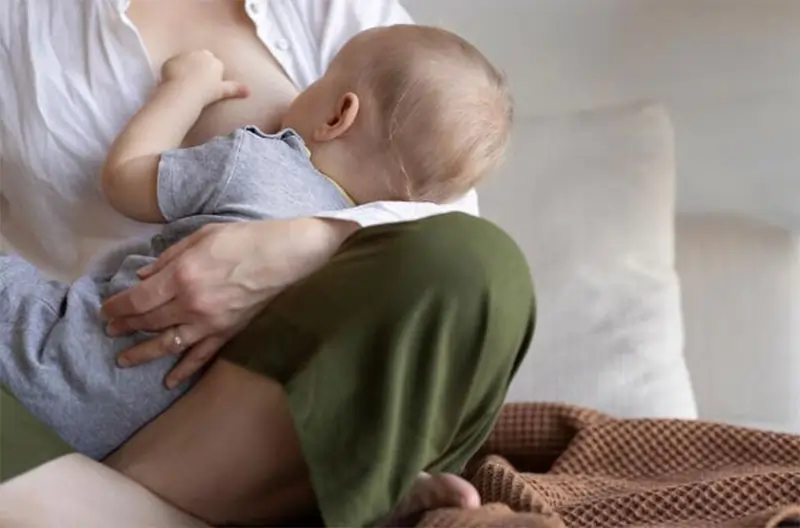Itchy Boobs While Breastfeeding: What’s Normal and When to Worry
Breastfeeding can change your body, and many moms find they get itchy boobs while breastfeeding. A bit of itch is just normal as your skin gets used to stretching or shifting, yet long-lasting or bad itch might show a bigger issue. Getting what’s good can make you feel calm while feeding your baby.
This article will tell you common causes of itchy boobs when you breastfeed, simple ways to ease it, and when it’s time to see a doctor. Along with those tips, utilizing a tool like an automatic bottle washer can help you in your daily baby duties. This will give you more time to rest and spend the day with your baby.
Is Itchy Skin Common During Breastfeeding?
Yes, many moms get itchy boobs while breastfeeding. As your breasts grow, the skin pulls wide and might get dry or pissed, which makes you want to itch. Even little stuff like wash soap, your sweat, or a tight bra can boost the itch.
Usually, in many cases, it is not a big deal. So you don’t have too worry about it too much. Yet, if the itch becomes too bad, stays long, or comes with red skin, swelling, or spots, it might mean you have an infection or other skin problem. You may also feel pain when you feed, which is one sign that indicates all is not well. If any of these occur, best to talk to your doctor so you can get good help and feel better soon.
Hormonal Changes That May Cause Itching
After a baby comes, your body sees many changes, some of these changes can make itchy boobs while breastfeeding your baby. As prolactin goes up to let you make milk, estrogen levels go down. This can make your skin dry and more touchy. That dryness often pops up as itch on your breasts or nipples.
These said changes in your body may also make your skin feel tight or a bit more sore as it grows and shifts. The good news is, this is all normal. Using a soft cream and picking comfy, airy clothes can help a lot in reducing the itch.
Dry Skin and Irritation From Frequent Nursing or Pumping
Nursing a lot can lead to itchy boobs while breastfeeding. The rubbing and stretching, along with a lot of wiping or washing, can take away the skin’s oils. This can make your breasts dry, tight, or even hurt. Some moms see cracked or flaky skin, which can make the itch worse, in long feeding or pumping times.
Here are some easy ways to help the itch and keep your skin safe:
- Use a soft, safe-for-nipple lotion
- Put on soft and soaking-up nursing pads
- Pick loose, airy clothes
- Let your skin breathe between feeds
- Drink lots of water
- Stay away from rough soaps or cleaners
- Use warm cloth for a bit of ease
- Change nursing pads often to keep dry
- Get a humidifier if your home air is too dry
As an extra tip, consider using an automatic bottle washer—it saves time on cleaning bottles, giving you more moments to rest and care for your skin.
Could It Be a Yeast Infection or Thrush?
At times, itchy boobs while breastfeeding might be due to a yeast issue or thrush. This takes place when yeast grows too much on the nipples or breast area. Thrush can grow because of some meds, body shifts, or high wetness. It can make the nipples itch, hurt, or feel hot when you touch them when checking it.
Also, the skin might look red, get flaky, or have tiny breaks. Some moms also feel deep and sharp pain in their breast when or after feeding. Usual signs of yeast or thrush are:
- Your nipples might itch or burn.
- They could turn red, look shiny, or peel.
- Cuts that won’t heal fast.
- Sharp pain in your breasts when you feed or right after.
- A baby with white spots in their mouth or a lasting diaper rash.
Signs of Mastitis or Other Infections You Shouldn’t Ignore
Itchy boobs while breastfeeding your baby are often not a big deal, but at times the pain can mean an infection, like mastitis. Mastitis happens when a milk path gets stuck and germs inflame the breast.
It usually starts fast and can make one side feel hurt, big, and hot when you touch it. A lot of moms also feel very tired, with signs like cold shakes, high body heat, or sore all over. Look for these signs of mastitis or infection:
- Pain or a tender spot on one part of the breast
- Red, big, or hot skin on the breast
- A hard bump or a sore, hard spot
- Broken nipples that won’t heal or leak odd stuff
- High fever, cold shakes, or feeling very tired
- Pain in the breast that stays after feeding or pumping
- Pus or thick liquid from the nipple.
Tips for Soothing and Preventing Itchy Breasts

Itchy boobs while breastfeeding a baby can be hard, but you can find essential tips to help and even stop it from being so bad. As a mother, you should take good care of your skin, drink a lot of water, and check your daily habits to help keep the itch away. Here are some good tips that you can apply:
- Use a soft, no-smell cream to keep your skin soft
- Drink a lot of water to keep your skin doing well from the inside
- Pick soft, airy clothes to cut down on rub and sore skin
- Swap out nursing pads a lot to keep dry
- Don’t use strong soaps or smell-good things on your chest
- Let your skin get air when you can
- Put warm pads on to ease pain and help blood flow
- Check that your bra fits right and isn’t too tight
- Eat foods with good fats to help fix your skin
When to See a Doctor or Lactation Consultant
Most of the time, itchy boobs while breastfeeding your baby are not too bad and get better with easy care. However, given the fact that it’s normal, there are also times when it is good to ask for help. If you know what to look for, you can feel better faster and keep away from larger issues.
You should talk to your doctor or a milk-help person if you see:
- Persistent itching that doesn’t ease or keeps getting worse
- Redness, swelling, or a rash on the breast
- Nipples with cracks or sores that don’t heal
- Sharp or hot pain when you feed or after
- Fever, cold feelings, or signs like the flu
- Stuff like pus coming out of the nipple
- A hard bump or thick spot in the breast
- Breast pain that stays after feeding or pumping
- Skin that is shiny, flaky, or hurts a lot
- Nipples that change color quick (very light, purple, or dark red)
Conclusion
Dealing with itchy boobs while breastfeeding your baby can be a pain, but most of the time, it’s all normal. With easy tips and care, you can heal them slowly but surely. Keep your skin wet, pick soft clothes, and drink lots of water to help stop the itch and make feeding better for you. Small swaps in what you do can bring big help.
But, if the itch gets worse, won’t go away, or comes with other signs like big skin, hurt, or heat, it’s time to call your doctor or a milk-help person. Getting help soon will make you feel good and keep your feeding path smooth. And don’t forget, tools like an automatic bottle washer can take some work off your day, giving you more time to rest and be close with your baby.



